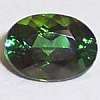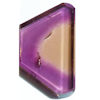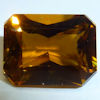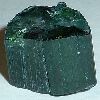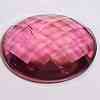
The first time I set my eyes upon a tourmaline, I could not believe that such a beautiful stone, with such marvelous color variety, could exist naturally! Little did I know then, this stone not only yields amazing color combinations, but also has a very interesting history.
Appropriately, since tourmalines have the richest color variety of all gemstones, it was given the name Turamali, which is believed to mean “stone with mixed colors.” It was given this name in the early 1700’s when the Dutch imported it to Western and Central Europe from Sri Lanka. Although this is the origin of its name today, the Dutch often called it aschentrekker, which means ash puller.
The story behind this Dutch name for tourmaline is explained through a curious characteristic of the stone. By heating, subsequently cooling, and applying pressure, by rubbing for example, a tourmaline crystal becomes electrically charged. With this charge, it will attract dust particles or small pieces of paper.This gemstone phenomenon is called the pyroelectrical effect. Aware of this effect, the Dutch utilized hot Tourmaline stones to pull ash out of their smoking pipes!
Tourmaline’s history is only a small part of why it is one of my favorite stones. Another interesting tourmaline fact (especially to me since I just returned from southern Germany) is that it rivals opal as an October birthstone in German speaking countries!
Just as its variety in color, tourmaline has a variety of reasons
why anyone, from gem amateurs to experts, can appreciate its existence. Just as its Sinhalese name implies, colorless and uni-colored tourmalines are very rare. The most sought after colors are pink, green, and a seemingly endless variety between.
A particularly interesting combination of these highly desired colors can be found in the “watermelon” variety, which comes from the most important tourmaline source of Brazil. True to its name, the watermelon tourmalines have a red interior with a green outer ring.
While tourmaline’s color variety sets it apart from other stones, it can also lead to confusion on identification. The best way to not confuse a tourmaline with an amethyst or peridot, for example, is to identify its marks of high double refraction and strong pleochroism. Continue reading for my synopsis of Dave’s crash course on double refraction and pleochroism!
Double refraction is the splitting of the incoming light at two different angles due to the composition of the mineral. To a trained viewer, gems with a high double refraction can be recognized with the eye and a loupe. You can try this on relative large gems (12x10mm or bigger). Focus on a pavilion facet edge (the line of that edge) through the table of a highly double refractive gem, and you will notice two distinct lines of that edge. Minorly double refractive gems will just be blurry, but high ones will have two distinct lines.
Pleochroism is the characteristic that minerals will show different colors depending on the viewing angle. The most obvious effect of the pleochroism in tourmaline is an effect called “dark C axis.” The “dark C axis” should be highly respected when cutting a Tourmaline due to the risk that a potentially beautiful gem could look black when finished if the dark C axis is not avoided. For this same reason, tourmalines are typically in an elongated emerald cut.
Clearly, tourmalines prove to not only be beautiful and unique, but also useful if you choose to smoke a pipe. With these characteristics, I believe that tourmalines make for an appropriate October birthday or Christmas gift!
